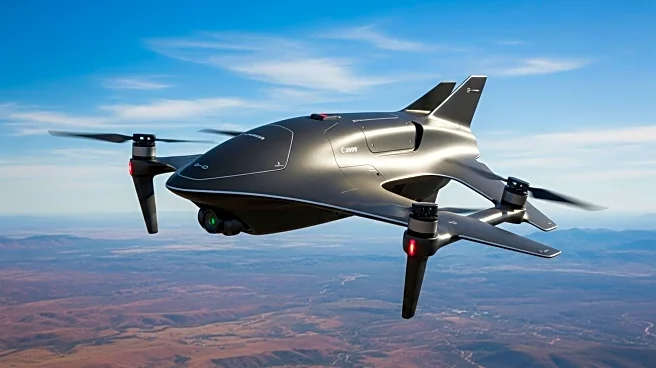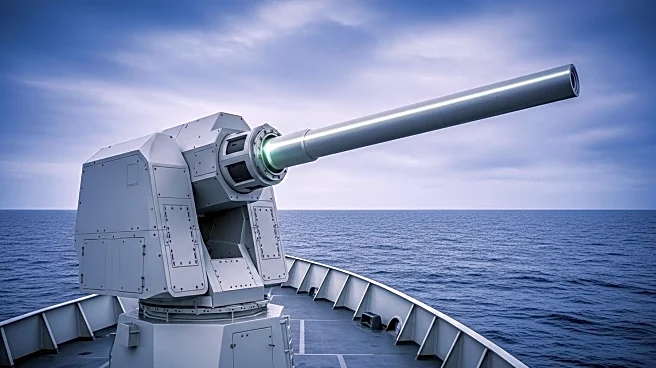What's Happening?
Boeing's MQ-28 Ghost Bat, a collaborative combat aircraft, has made its public flying debut at Australia's Woomera test range. Two MQ-28s participated in the demonstration, showcasing their capabilities to reporters. The aircraft has undergone extensive testing, including 150 hours of flight tests and over 20,000 hours in virtual environments. Key milestones achieved include multi-ship operations, teaming with an RAAF Boeing E-7 Wedgetail, and data fusion among multiple MQ-28s and crewed platforms. Boeing plans to accelerate development phases, with an air-to-air weapon test scheduled for later this year or early 2026.
Why It's Important?
The MQ-28 Ghost Bat represents a significant advancement in unmanned aerial combat technology, potentially enhancing military capabilities through collaborative operations with manned aircraft. Its successful testing and public debut highlight Boeing's progress in developing cutting-edge defense systems. The aircraft's ability to integrate with existing platforms and perform complex operations could redefine air combat strategies, offering new tactical advantages. This development is crucial for the U.S. and its allies, as it strengthens defense capabilities and supports strategic military objectives in the Asia-Pacific region.
What's Next?
Boeing plans to conduct an air-to-air weapon test at Woomera, where the MQ-28 will launch a Raytheon AIM-120 missile. This test will further validate the aircraft's combat capabilities and pave the way for more advanced testing. Boeing Defense Australia is producing additional Block 2 aircraft to support these efforts. The successful completion of these tests could lead to increased interest from military clients and potential export opportunities. Boeing's continued innovation in unmanned systems may also influence future defense procurement and development strategies.











